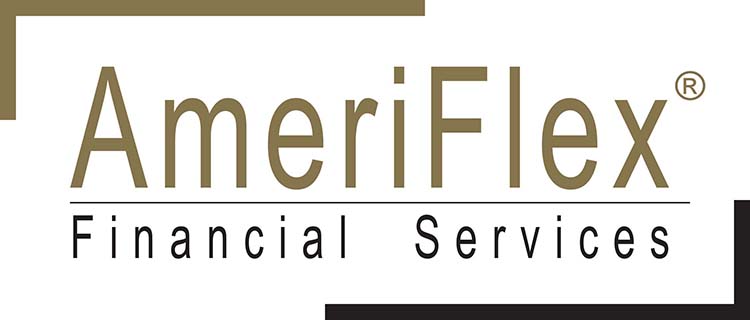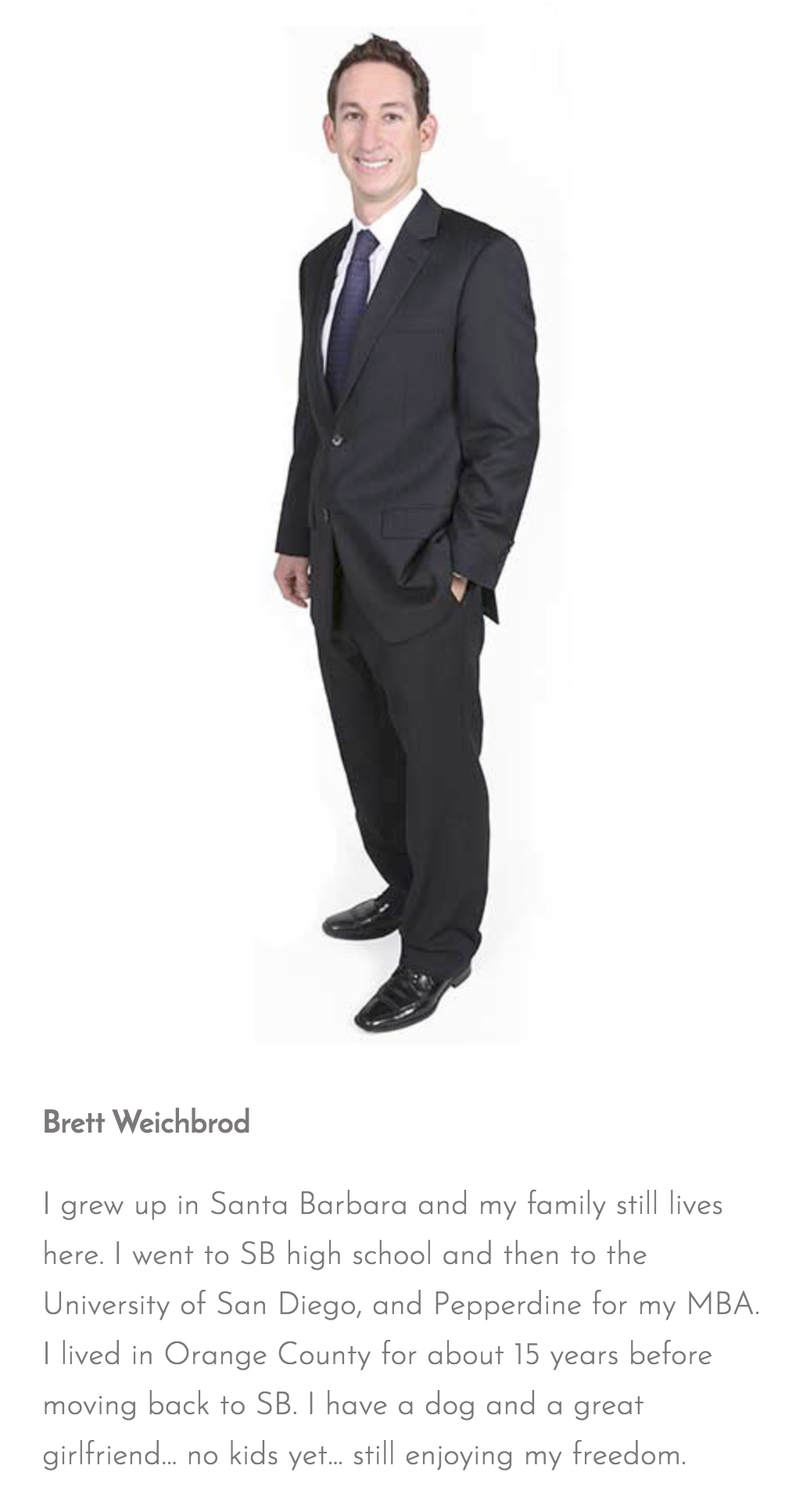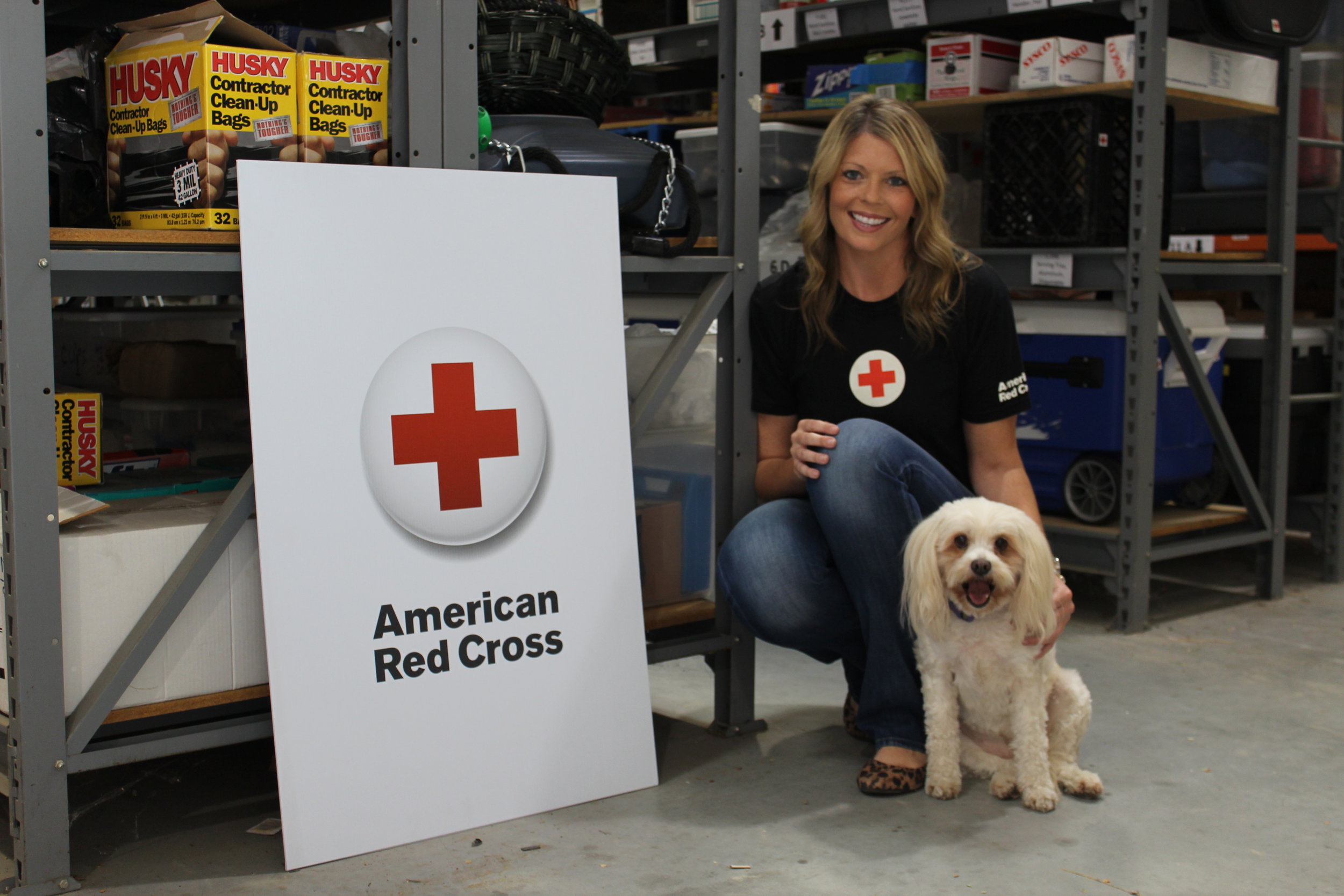Business of the Month: Direct Relief
We were honored to visit Direct Relief headquarters today with their Associate Director of Partnerships and Philanthropy, Dean Axelrod. With all of the natural disasters that have taken place this year, we knew the relevance of fully understanding what it is they do, how they do it, why they do it, and wanted to help spread the awareness of their importance and impact, based right out of our own community.
Since we got the grand tour, we decided to do Business of the Month a little differently this time. So here is some background on Direct Relief and where the organization came from because it really puts what they are doing today into perspective - as told to us by Dean:
The organization was founded in 1948 right here in Santa Barbara, by an Estonian immigrant named William Zimdin. He had come to the United States to escape the Nazis during the second world war, and settled in Santa Barbara. He was a successful businessman and philanthropist that could be thought of as the 1948 equivalent of someone like Bill Gates. At the end of the war he wanted to help people who needed assistance rebuilding their lives in the aftermath of the war, and formed a charitable foundation that became Direct Relief. With the help of his business associate, Dennis Karzag, the humanitarian organization began by sending a broad range of relief supplies to those in need, and eventually focused exclusively on medical equipment, healthcare supplies and medicines. The organization began by responding to those in need because of the war, before long Direct Relief extended its humanitarian reach to those affected by natural disasters, and those in need of medical resources every day.
Today that is still the mission of Direct Relief. The organization improves the health and lives of millions of people who are affected by poverty or emergency situations by mobilizing and providing medical resources seeded for their care, for free. Direct Relief responds to this need by delivering medicines and medical supplies to local healthcare facilities in resource-poor communities in all 50 states and worldwide. By strengthening healthcare infrastructure at the local level, Direct Relief helps communities care for their most vulnerable people.
Staying true to its roots as an organization founded by successful businessmen, Direct Relief has a tradition of identifying and implementing the best business practices, tools, and technology in order to accomplish its charitable mission. A business principle that was implemented from the beginning and which continues to make Direct Relief successful is the use of leverage.
Leverage money with in-kind gifts - William Zimdin funded the foundation with his own money. Realizing that if the organization’s relief work was paid for with those funds alone, it wouldn’t last very long. Even with additional donated money, a charity with an international reach addressing great needs would not be able to efficiently achieve its mission. So, instead of using cash to buy medicines and medical supplies the organization stretched its financial resources by getting donations of medicines and supplies to provide for as much of the need as possible. Today most of the aid Direct Relief delivers has been received in the form of in-kind donations. Last year they delivered about $1 billion (wholesale value) of medicines and supplies all over the world and almost all of that was donated. Cash is then used strategically to buy some medicines and supplies, to pay for shipping costs beyond what FedEx donates, and to pay to run its domestic and international relief programs.
Leverage relationships by creating lasting partnerships – The idea is to work with trusted organizations and individuals that have a long-term commitment to the communities where they live and work, and to Direct Relief’s mission. Downstream on the customer side of the humanitarian supply chain Direct Relief builds relationships with healthcare facilities and community organizations that help identify specific needs. Direct Relief operates like a business would, by identifying, measuring, analyzing data about health and healthcare need, and then offering solutions to those needs precisely and efficiently. Upstream on the philanthropic supplier side of the humanitarian supply chain, Direct Relief identifies partners who make the needed products very efficiently and at high quality, and who want to help. Direct Relief provides the middle links in the humanitarian supply chain by identifying those who need resources but can’t access them, and then identifying those who have resources but don’t have an effective and efficient way to mobilize the resources. Direct Relief fills that gap and delivers those resources where they are needed.
As we entered the Direct Relief warehouse, Dean paused to show us a display case showing each and every wholesale pharmaceutical distributor license they have - in all 50 states. Acquiring and maintaining these licenses is important and something to be proud of. Direct Relief is the ONLY charitable pharmaceutical program that is licensed in all 50 states. The initiative to get licensed to distribute wholesale medicines and supplies on a charitable basis for free in all 50 states started with Direct Relief’s response to Hurricane Katrina. Direct Relief had been primarily providing humanitarian relief outside of the United States. After Hurricane Katrina devastated so many communities, Direct Relief identified community health facilities that needed support to care for the large number of people who were displaced. When they went to offer help, they realized that they would need a pharmaceutical wholesale distributor license for each state where there were clinics that needed medicines. That was their wake-up call. They saw that there were no charitable medicine providers that were licensed in all 50 states. It was clear that there was a need, and Direct Relief stepped up to fill the gap.
They are also the only non-profit to receive V.A.W.D Verified Accredited Wholesale Distributor designation from the National Association of Boards of Pharmacy. VAWD is an accreditation program for wholesale drug distributors that was developed to help protect the public from contaminated, diverted, or counterfeited drugs. Even though Direct Relief delivers medicines free of charge it operates at the highest commercial standards, and that is what VAWD accreditation represents. Some states require VAWD accreditation in order for a commercial or charitable pharmaceutical wholesale distributor to be licensed.
Dean went on to show us their warehouse which was operating like a well-oiled machine when we walked in. Workers working diligently to pack and ship the supplies internationally and nationally, using the newest technology, which reduces the risk of order fulfillment errors and improves time management, making Direct Relief even more efficient. They have expanded over the years on their capabilities by keeping up to this standard of operation which you would expect from a for-profit business.
Almost all of the public and media attention Direct Relief receives is focused on its disaster response program, but most of what they do is on-going year-round support for the health facilities that they would be supporting during an emergency. What Direct Relief does after a natural disaster is the same thing they were doing the day before – delivering essential medicines to under-resourced communities to support their local healthcare system. The difference is that after the disaster they do it faster and at a higher volume. The reason Direct Relief is able to respond so quickly and so efficiently in an emergency is because they have that on-going relationship with their partners in the same communities before the emergency.
Dean went on to tell us that in a disaster there can be a lot of relief supplies that starts arriving at an airport or shipping port serving the affected community.
As we walked through the warehouse we saw palettes of supplies ready to be shipped, all easily identified and wrapped in clean bright colors and clearly labeled. Direct Relief packs and wraps deliveries so they will be easy to identify by their partners who receive them. We saw a lot of neat and tidy color coordinated packaging, that’s for sure.
Another important business principle that Direct Relief uses is standardization of things that are done repeatedly and predictably. When you establish a recognized and accepted standard, then you can scale up efficiently. One of the early examples of this is Direct Relief’s Hurricane Preparedness Packs. By analyzing data, the organization saw that hurricanes strike in more or less the same place, at more or less the same time of year within a range of months and within a geographic range, year after year.
Working with healthcare facilities in hurricane-prone communities throughout the year, Direct Relief learned what supplies would be needed after a hurricane. So, they created standardized response packs full of essential medicines that could be prepositioned with any healthcare partner who requested them before hurricane season begins. Then, if the community is struck by a hurricane, an immediate supply of medicines will be on hand to hold them over for a few days until a needs assessment can be completed and additional supplies are delivered.
Direct Relief even has their own hurricane relief map that they share online that actually shows you all the hurricane tracks from hurricanes going back 50 years and in real time. If there is a storm brewing somewhere, you can bet Direct Relief knows about it and is ready to aid those affected.
As you can imagine, Direct Relief is at full operating capacity because of all the communities they support throughout the year, and with the continuing response to all the recent natural disasters. Direct Relief is there before a disaster happens, they are there when the disaster happens, and they are there often for years while communities rebuild after most people have forgotten about them. Direct Relief will even be moving into a new, larger, state-of-the-art facility here in Santa Barbara to increase their capacity and continue helping those affected by poverty and natural disasters here at home, across the United States, and around the world.
Wondering how you can help? We were too. The best ways you can help are with financial support and increasing awareness of what Direct Relief does to support community healthcare for people affected by poverty and emergency situations here in Santa Barbara, in all 50 states, and around the world. Direct Relief’s work is funded entirely by private donations – the organization does not ask for or receive government grants.
If you are an individual, own a business, or belong to a club or group and are interested in helping to raise money to support Direct Relief’s work, click here. Direct Relief has staff and online resources to help you plan a fun and successful fundraiser.
If you want to donate money directly click here
If you want to spread the word, “like” Direct Relief’s Facebook page, follow them on Twitter and Instagram, share posts that you think are interesting, and click here to share this post with your friends.
We would love to partner up with those who are putting on a Direct Relief fundraiser or event. Just send an email to team@hitchockre.com and we will get the word out!
Special thanks again to Dean Axelrod for our tour and in-depth knowledge of the Direct Relief facility.















































